In recent years, the commercial air fryer market has experienced a surge in popularity, transforming the way food is cooked and consumed across various industries. As this trend continues to gain momentum, it’s crucial to delve into the nuances of the market dynamics, consumer preferences, and the technological advancements shaping this industry. This article aims to provide an in-depth look at the rise of air fryers in Western markets, the key players dominating the scene, the challenges and opportunities faced by manufacturers, the impact of sustainability on production, and the evolving consumer health trends influencing demand. By examining these factors, we can better understand the forecast and future outlook for the commercial air fryer industry.
Introduction to Commercial Air Fryer Market
The commercial air fryer market has experienced a remarkable surge in popularity over the past decade, becoming a cornerstone in the culinary landscape. These innovative appliances have transformed the way we cook, offering a healthier alternative to traditional deep-frying. As we delve into this burgeoning sector, it’s essential to understand the market dynamics, consumer behaviors, and the technological advancements that are shaping the future of commercial air fryers.
With their ability to produce crispy, golden-brown foods with minimal oil, air fryers have captured the interest of both health-conscious consumers and commercial kitchens alike. The convenience and efficiency of these appliances have made them a staple in fast-food chains, restaurants, and even home kitchens. This shift in consumer preference has led to a significant increase in demand for commercial air fryers, creating a fertile ground for growth in the market.
The commercial air fryer market is characterized by a diverse range of products, each designed to cater to specific needs and preferences. From countertop models to integrated systems, these appliances come in various sizes and capacities, making them suitable for different types of commercial settings. The market is also witnessing a surge in the development of smart air fryers, which offer advanced features like remote monitoring and automated cooking programs, enhancing user experience and efficiency.
In the European market, air fryers have found a strong following, driven by health trends and a growing awareness of the benefits of low-fat cooking methods. The region’s consumers are increasingly seeking healthier alternatives to traditional cooking methods, and air fryers fit perfectly into this narrative. The European Union’s stringent food safety regulations have also played a role in shaping the market, with manufacturers focusing on compliance and innovation to meet these standards.
Similarly, the American market has seen a substantial growth in the commercial air fryer sector. The U.S. consumer base is particularly interested in the health benefits of air frying, as they are more likely to embrace new technologies that promise a healthier lifestyle. The rise of fast-casual dining has also contributed to the market’s growth, with many restaurants opting for air fryers to offer lighter, healthier menu items.
In terms of market trends, the commercial air fryer industry is witnessing a shift towards energy-efficient and environmentally friendly appliances. As sustainability becomes a key concern for businesses and consumers, manufacturers are focusing on developing air fryers that consume less energy and have a smaller carbon footprint. This trend is not only beneficial for the environment but also for the bottom line, as energy costs remain a significant factor in operational expenses.
The competition within the commercial air fryer market is fierce, with several key players vying for market share. These players range from established appliance brands to niche manufacturers specializing in commercial kitchen equipment. The market share analysis reveals a fragmented landscape, with no single player dominating the sector. This competition fosters innovation and drives the development of new features and technologies that benefit both manufacturers and consumers.
Despite the growth and innovation, the commercial air fryer market faces certain challenges. One of the primary challenges is ensuring consistent quality and performance across different models and brands. With so many options available, consumers and businesses can be overwhelmed by the choices, and manufacturers must work to differentiate their products effectively.
Another challenge is the need for ongoing education and awareness campaigns. Many consumers are still unfamiliar with the benefits of air frying, and it’s up to manufacturers and retailers to educate the market on the health and economic advantages of these appliances. This education is particularly crucial in the commercial sector, where understanding the cost savings and operational benefits can make a significant difference in a kitchen’s bottom line.
In conclusion, the commercial air fryer market is a dynamic and rapidly evolving sector, driven by health trends, technological advancements, and consumer preferences. As the market continues to grow, manufacturers and retailers must stay abreast of the latest trends and consumer needs to remain competitive. By focusing on innovation, sustainability, and education, the commercial air fryer market is poised for continued expansion and success.
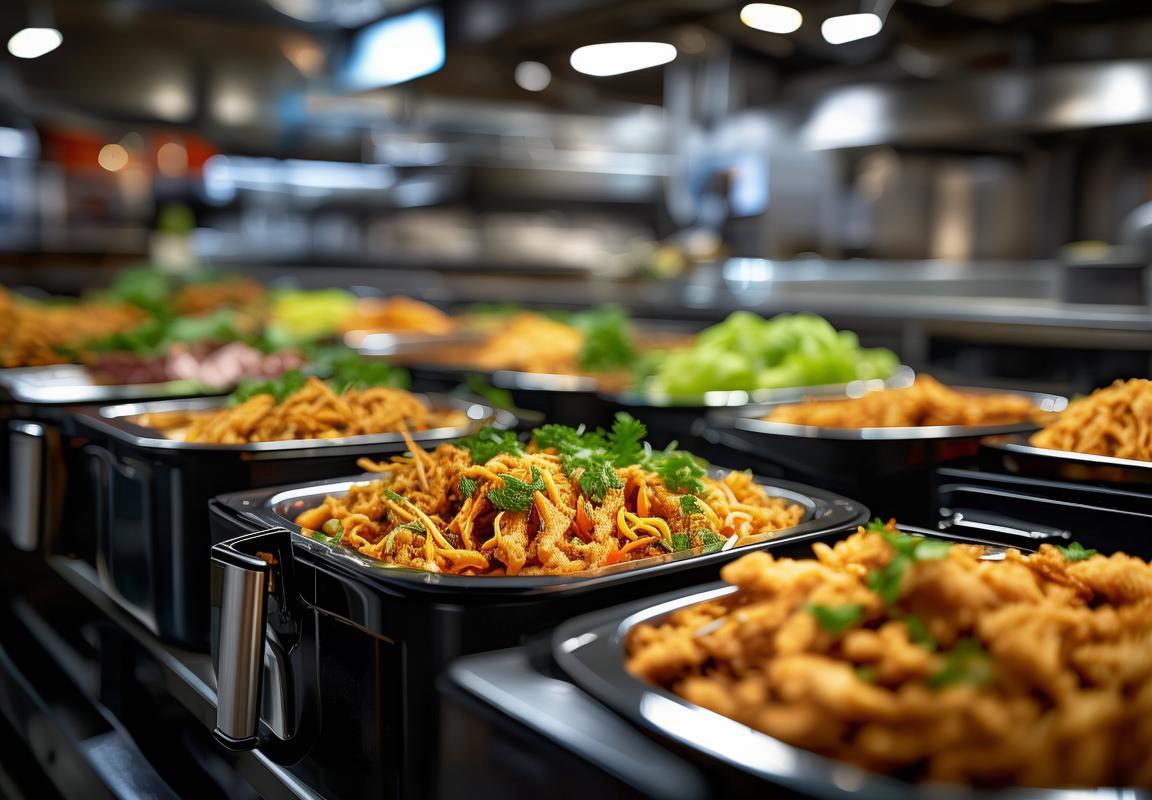
The Rise of Air Fryers in Western Markets
In the past decade, air fryers have quietly transformed the culinary landscape in Western markets, becoming a staple in kitchens across Europe and North America. This surge in popularity can be attributed to several key factors that have aligned to create a perfect storm for the air fryer market.
The health consciousness of consumers in the West has been on the rise, with a growing number of people seeking healthier alternatives to traditional deep-frying methods. Air fryers offer a solution that promises crispy fried foods with significantly less oil, making them an attractive option for those looking to reduce their intake of saturated fats and calories.
Supermarkets and department stores have been instrumental in the proliferation of air fryers. Retailers have actively promoted these kitchen appliances through various channels, from in-store demonstrations to glossy advertising campaigns. This marketing strategy has not only educated consumers about the benefits of air fryers but has also created a buzz that has spurred sales.
Restaurants and fast-food chains have also played a role in popularizing air fryers. As health concerns have grown, many establishments have started to offer menu items cooked using air fryers, showcasing their commitment to healthier options. This has encouraged at-home chefs to embrace the technology for similar reasons.
The technology behind air fryers has continued to evolve, making them more efficient and user-friendly. Modern air fryers often come with various programs and pre-sets, making it easy for users to achieve the perfect crispness without the need for constant monitoring. Features like temperature control and auto-shutoff have further added to the appeal of these appliances.
The convenience factor cannot be overstated. Air fryers occupy less space than traditional deep fryers and are generally easier to clean. This compact size and the reduced cleaning effort have made them a popular choice for urban dwellers and those with limited kitchen space.
Cultural shifts, too, have contributed to the rise of air fryers. There’s a growing trend towards home cooking, as busy lifestyles lead consumers to seek out more time-efficient cooking methods. Air fryers offer a quick and efficient way to prepare meals without sacrificing taste, making them an ideal solution for busy families and individuals.
Cookbooks and recipe websites have also seen an explosion of air fryer recipes. Chefs and food enthusiasts are continually experimenting with this new cooking method, creating a wealth of recipes that range from classic French fries to gourmet chicken wings. This wealth of recipes has sparked creativity in the kitchen and has helped to spread the air fryer phenomenon.
Moreover, the cost of air fryers has steadily decreased over the years, making them more accessible to the average consumer. The entry-level models are now available at a price point that is comparable to other small kitchen appliances, further fueling the demand for these devices.
Finally, the environmental consciousness among Western consumers has also played a part in the air fryer’s rise. These appliances consume less energy than traditional frying methods, and their smaller size means they contribute less to kitchen waste. As sustainability becomes a more prominent factor in purchasing decisions, air fryers are positioning themselves as a greener option.
In summary, the rise of air fryers in Western markets is a multifaceted phenomenon, driven by health concerns, convenience, technological advancements, and cultural shifts. As the market continues to grow, it’s clear that air fryers have become more than just a kitchen gadget; they’ve become an essential tool for modern cooking.
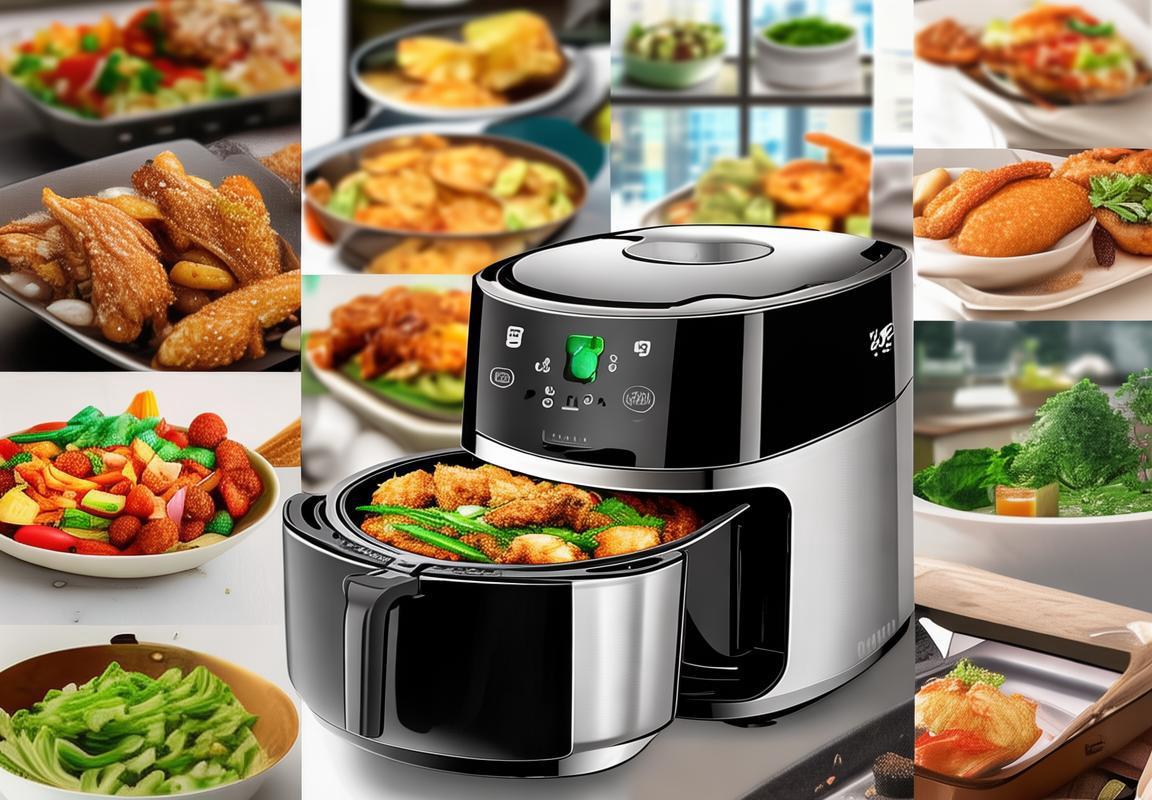
Understanding the European and American Dynamics
In the vibrant landscapes of Europe and America, the dynamics of the commercial air fryer market have been shaped by a unique blend of culinary traditions, technological advancements, and consumer lifestyles. Europe, with its rich gastronomic heritage, has embraced air fryers as a modern twist on traditional cooking methods. Conversely, the dynamic and diverse American market has seen air fryers gain popularity for their versatility and health benefits.
European Markets: A Culinary EvolutionEurope’s air fryer market has seen a steady growth, driven by a preference for healthier cooking alternatives. The continent’s love for fried foods, from French fries to fritters, has found a new friend in air fryers. Countries like Germany, Italy, and the UK have seen a surge in demand as consumers look for ways to enjoy their favorite fried dishes with less oil. The European Union’s focus on sustainability and energy efficiency has also played a role, with manufacturers offering eco-friendly and energy-saving models that resonate with environmentally conscious consumers.
American Markets: A Versatile ApproachThe American market, on the other hand, has taken a more eclectic approach to air fryers. With a diverse population and a vast array of culinary influences, the US market has seen air fryers become a staple in kitchens across different demographics. The versatility of these appliances, which can cook everything from crispy chicken to vegetables, has made them a hit among health-conscious individuals and busy professionals. Additionally, the rise of fast-casual dining has influenced the market, with consumers seeking to replicate the convenience of restaurant-style cooking at home.
Cultural Differences in AdoptionThe adoption rates of air fryers in Europe and America reflect cultural differences in cooking habits and preferences. In Europe, the emphasis is often on traditional recipes and the ability to mimic the taste and texture of fried foods without the excess fat. This has led to a market that is highly sensitive to innovation, with manufacturers constantly improving their products to meet the exacting standards of European consumers.
In the US, while the same focus on health is present, the market is more open to experimentation and innovation. American consumers are more likely to use air fryers for a wider range of dishes, including desserts and snacks, which has expanded the market beyond the realms of traditional fried foods.
Regulatory LandscapeThe regulatory landscape also plays a significant role in shaping the commercial air fryer market in both regions. In Europe, the EU’s stringent health and safety standards have influenced the design and manufacturing processes of air fryers, ensuring that they meet the highest safety benchmarks. In the US, the Food and Drug Administration (FDA) regulates kitchen appliances, and manufacturers must comply with strict guidelines to ensure consumer safety.
Consumer Behavior and Marketing StrategiesConsumer behavior in both Europe and America has been pivotal in the growth of the commercial air fryer market. Health and wellness trends have been at the forefront, with consumers increasingly seeking out products that align with their lifestyle choices. Marketers have responded by emphasizing the health benefits of air fryers, such as lower calorie content and reduced oil usage, in their promotional campaigns.
In Europe, marketing strategies often focus on the appliance’s ability to offer a guilt-free indulgence, while in America, the emphasis is on the convenience and variety of dishes that can be prepared. The use of social media and influencer partnerships has been particularly effective in both markets, as consumers are more likely to be influenced by peer recommendations and online reviews.
Technological AdvancementsTechnological advancements have been a driving force behind the success of commercial air fryers in both Europe and America. Features such as programmable settings, digital displays, and smart technology have enhanced the user experience and made air fryers more appealing. The integration of these technologies has not only improved the cooking performance but has also made air fryers a more sophisticated and appealing kitchen appliance.
In conclusion, the commercial air fryer market in Europe and America has been shaped by a combination of cultural preferences, regulatory requirements, consumer behavior, and technological innovation. While there are similarities in the reasons for the rise in popularity, the unique dynamics of each region have contributed to distinct market trends and consumer adoption patterns. As the market continues to evolve, it will be interesting to see how these differences influence future developments in the commercial air fryer industry.
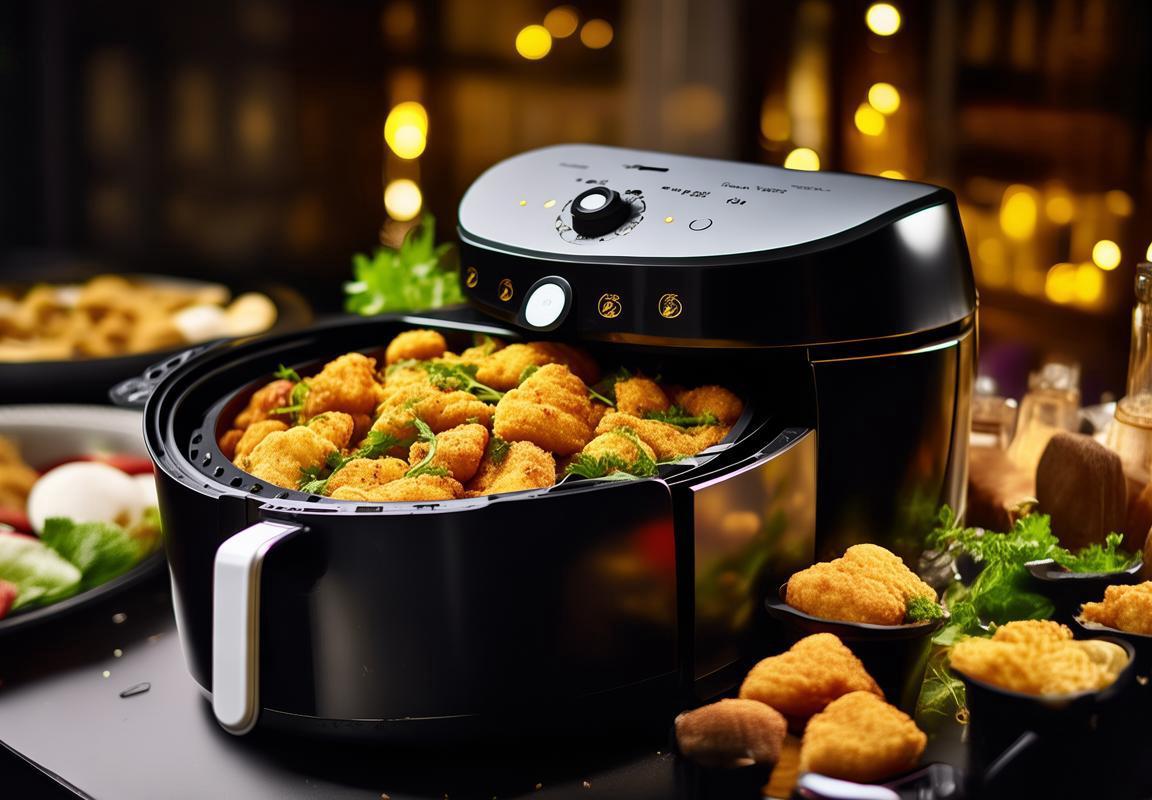
Market Trends and Consumer Preferences
In the dynamic world of kitchen appliances, the rise of air fryers has been nothing short of a revolution. This shift is particularly pronounced in the European and American markets, where consumer preferences and market trends have been shaped by a blend of cultural, health, and technological factors. Let’s delve into the nuances of these trends and preferences.
European markets have a long-standing tradition of embracing new cooking technologies that enhance both health and convenience. The European consumer, often health-conscious, has shown a significant preference for appliances that can offer delicious, low-fat, and healthier versions of fried foods. This preference is reflected in the growing popularity of air fryers, which have surged in sales across various European countries. From Italy to Germany, the air fryer has become a staple in many kitchens, driven by the desire for healthier cooking options without compromising on taste.
In the United States, the market for air fryers has experienced a meteoric rise. The American consumer has been influenced by the health and wellness movement, which has gained momentum in recent years. The convenience of air frying, which allows for the preparation of crispy, fried dishes with minimal oil, has struck a chord with busy individuals seeking quick and healthy meal solutions. Additionally, the trend towards home cooking and the rise of social media influencers who promote healthier lifestyles have further fueled the demand for air fryers.
The size of the air fryer market in both regions has been propelled by a series of trends. For instance, the trend towards portion control has led to the development of smaller, countertop air fryers that are perfect for single servings or small families. This trend is not only convenient but also aligns with the environmental movement, as it reduces food waste and energy consumption.
Consumer preferences in Europe and America also reflect a shift towards smart kitchen appliances. The integration of technology into air fryers, such as digital displays, preset cooking programs, and connectivity to mobile apps, has made these appliances more appealing. Users can now monitor their cooking progress remotely, set timers, and even receive alerts when their food is ready. This level of convenience and connectivity is a direct response to the increasingly tech-savvy consumer.
Moreover, the preference for air fryers is often intertwined with the desire for healthier cooking methods. Many consumers are seeking alternatives to traditional deep-frying, which is known to be high in calories and fats. Air fryers offer a healthier alternative that still delivers the satisfaction of crispy fried food without the guilt. The low-fat, low-calorie, and low-oil cooking method is particularly attractive to health-conscious individuals, fitness enthusiasts, and families with young children.
The market for air fryers has also been influenced by the growing interest in ethnic cuisine. With the globalization of food, consumers are increasingly interested in exploring international flavors. Air fryers provide a way to prepare a wide range of dishes from different cultures without the need for a lot of oil, making them a versatile tool for culinary adventurers. This has led to the development of specialized air fryer recipes that cater to a diverse palate.
In terms of material preferences, both European and American consumers are gravitating towards air fryers made from non-stick materials, which are easy to clean and maintain. The demand for eco-friendly appliances has also grown, with consumers increasingly looking for products that are produced with sustainable practices and materials.
As the market for air fryers continues to expand, manufacturers are responding by offering a wider range of features and models. The trend towards customization and personalization is evident in the variety of sizes, capacities, and functionalities available. From single-serve models to large family-sized air fryers, the market is catering to a wide spectrum of consumer needs.
In conclusion, the market trends and consumer preferences in the European and American markets for air fryers are a testament to the evolving landscape of kitchen appliances. The demand for healthier, convenient, and technologically advanced cooking solutions is driving innovation and shaping the future of the air fryer industry.
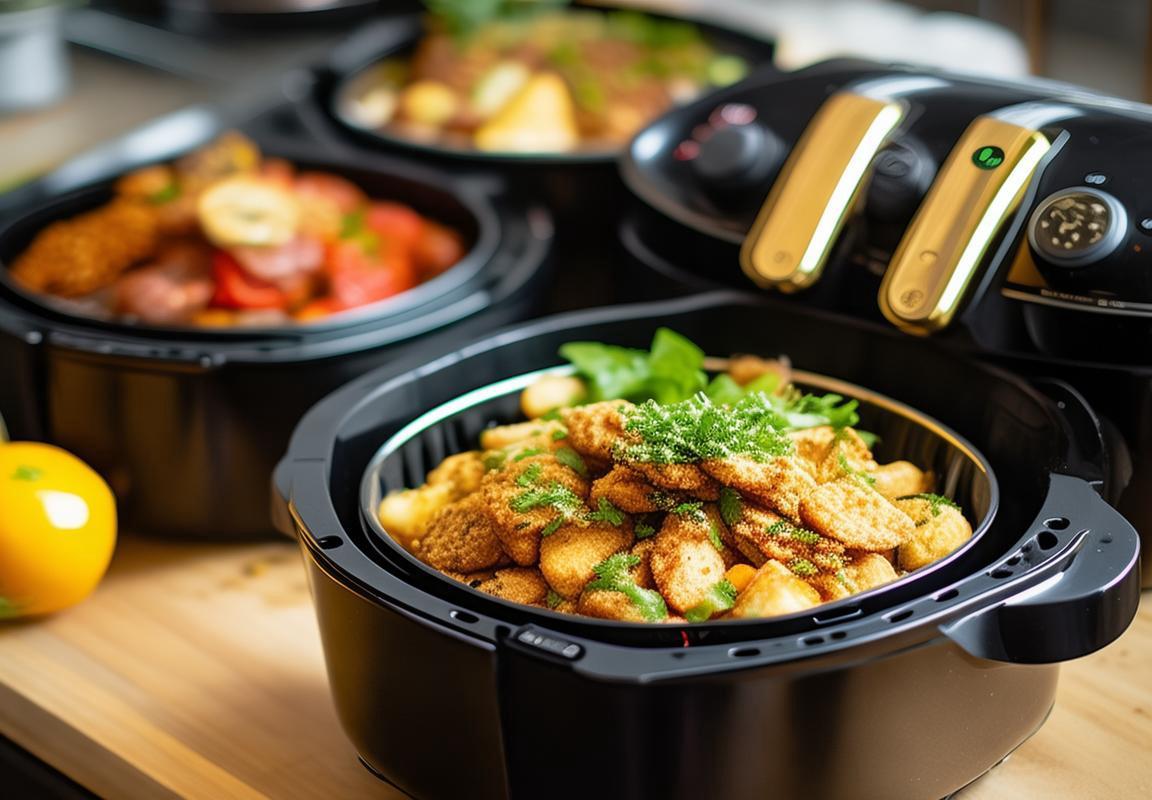
Innovations in Commercial Air Fryer Technology
In recent years, the commercial air fryer market has seen a surge in technological advancements, transforming the way restaurants and foodservice operations approach cooking. These innovations have not only enhanced the efficiency and functionality of commercial air fryers but also catered to the evolving preferences and demands of consumers. Here’s a closer look at some of the key technological breakthroughs in this sector.
The introduction of advanced heating elements has significantly improved the cooking performance of commercial air fryers. These elements provide a more uniform heat distribution, ensuring that food is cooked evenly without burning or undercooking. The use of ceramic or titanium-infused heating elements not only enhances heat transfer but also extends the lifespan of the fryer.
Smart technology has become a hallmark of modern commercial air fryers. With the integration of touchscreens, programmable settings, and even Wi-Fi connectivity, operators can easily customize cooking times and temperatures to achieve the perfect results. This level of control allows for the cooking of a wide variety of foods, from crispy French fries to tender chicken wings, with minimal effort.
Energy efficiency is a growing concern for businesses and consumers alike. Newer models of commercial air fryers are designed to use less electricity while still providing high-performance cooking. This is achieved through better insulation and more efficient heating systems, which reduce heat loss and energy consumption.
Safety features have also been a focal point for manufacturers. Modern commercial air fryers often come with automatic shut-off functions, which activate when the fryer reaches unsafe temperatures or is left unattended. This not only prevents potential fires but also ensures that the operator can leave the fryer running without worrying about safety.
The ability to customize the cooking process is another area where technology has made significant strides. Some commercial air fryers now offer adjustable fan speeds and heat settings, allowing operators to tailor the cooking experience to the specific requirements of different foods. This flexibility is particularly beneficial for restaurants that serve a diverse menu.
The incorporation of self-cleaning features has been a game-changer for busy kitchens. Many newer models now include self-cleaning cycles that utilize steam or high-pressure water jets to clean the cooking chamber. This not only saves time but also reduces the need for manual cleaning, which can be labor-intensive and prone to cross-contamination.
The use of digital temperature control has become standard in the latest commercial air fryers. This precise control allows for the cooking of delicate foods like fish and vegetables without the risk of overcooking. It also ensures that the outer layers of foods like chicken and beef are crispy while the interior remains juicy and tender.
In terms of design, commercial air fryers have evolved to be more compact and space-saving. This is especially important for fast-food restaurants and cafes where every square inch of kitchen space counts. Manufacturers have also focused on durability and ease of maintenance, ensuring that these fryers can withstand the rigors of a busy kitchen environment.
The integration of multiple cooking functions into a single unit is another innovation that has gained traction. Many commercial air fryers now come with additional features like grilling, roasting, and even baking capabilities. This versatility allows operators to reduce the number of appliances in their kitchen, streamlining operations and saving space.
Lastly, the focus on sustainability and eco-friendliness has led to the development of commercial air fryers that are made from recyclable materials and have a lower carbon footprint. This trend is not only beneficial for the environment but also appeals to consumers who are increasingly conscious of the origins and impact of the products they use.
In conclusion, the advancements in commercial air fryer technology have revolutionized the foodservice industry. From improved cooking performance and energy efficiency to enhanced safety and customization, these innovations continue to shape the future of commercial cooking. As technology continues to evolve, we can expect to see even more sophisticated features that cater to the diverse needs of operators and the ever-changing tastes of consumers.
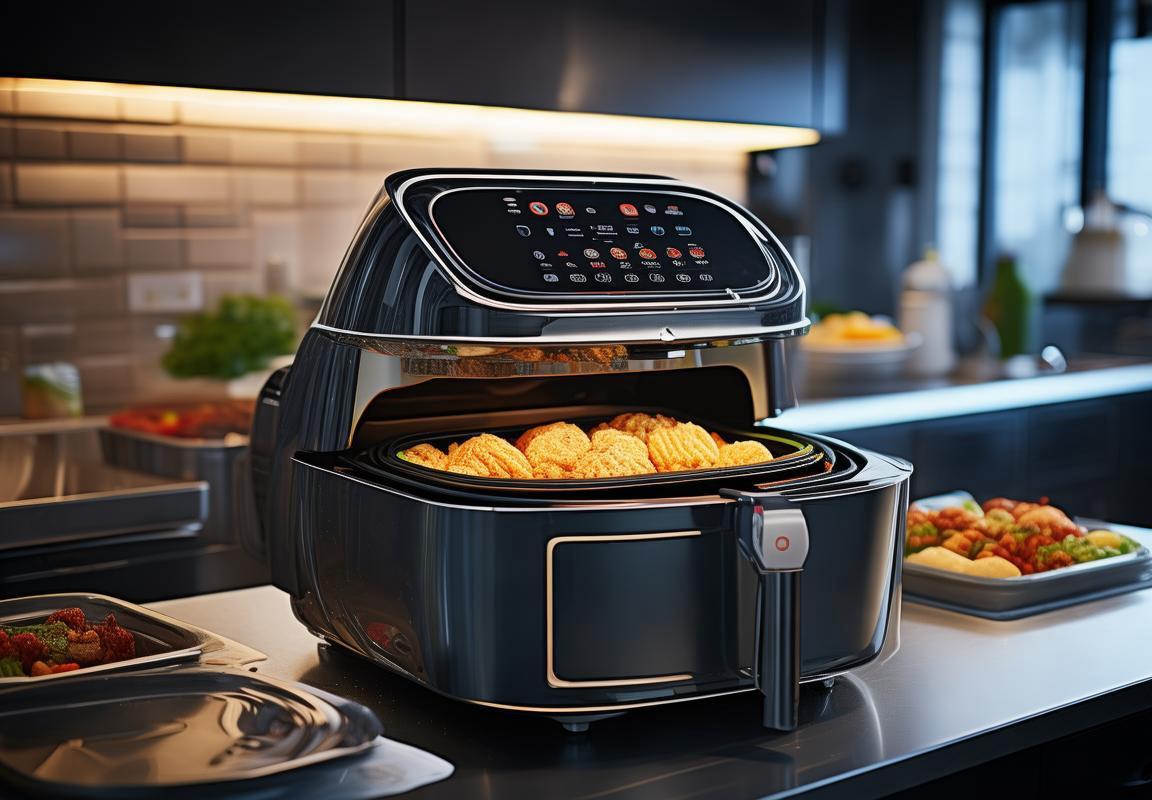
Key Players and Market Share Analysis
The commercial air fryer market is witnessing a surge of key players vying for dominance, each bringing their unique strengths and strategic approaches to the table. From established appliance giants to niche startups, the landscape is rich with variety. Here’s a glimpse into the profiles and market share analysis of some of the pivotal players in this sector.
Market Share DistributionThe distribution of market share among these key players is a testament to their respective strategies and market penetration. While no single company holds a commanding lead, certain players have carved out substantial niches for themselves.
Groupe SEBA leading player in the global small appliances market, Groupe SEB boasts a strong presence in the commercial air fryer segment. Their Tefal brand is particularly renowned for its air fryers, which have captured a significant market share in Europe and North America. SEB’s strategy revolves around innovation and product diversification, ensuring they cater to a wide range of consumer needs.
BrevilleAustralia-based Breville has made a name for itself in the premium air fryer market. Their sleek designs and focus on health-conscious consumers have helped them secure a considerable market share, particularly in the United States. Breville’s success lies in their commitment to quality and functionality, offering consumers an array of features that set them apart from competitors.
PhilipsThe Dutch electronics giant Philips has leveraged its extensive experience in kitchen appliances to establish a solid position in the commercial air fryer market. Their air fryers are known for their efficiency and versatility, appealing to both commercial users and consumers alike. Philips’ strong distribution network and brand recognition have contributed to their significant market share.
GoWISE USAAs a relatively newer entrant in the commercial air fryer scene, GoWISE USA has quickly gained traction by offering budget-friendly yet high-quality air fryers. Their focus on affordability has allowed them to capture a sizeable share of the market, especially among price-conscious consumers. GoWISE’s strategic partnerships and online sales channels have been pivotal in their growth.
CuisinartCuisinart, a well-known brand in the kitchen appliance industry, has successfully transitioned its reputation into the commercial air fryer sector. Their range of air fryers, which cater to both residential and commercial markets, has helped them secure a considerable market share. Cuisinart’s focus on innovation and customer satisfaction has been key to their success.
Breville USABreville USA has expanded its brand globally, and its commercial air fryers have found favor in the American market. With a focus on health and convenience, Breville has been able to carve out a niche among health-conscious consumers. Their strong online presence and strategic partnerships have contributed to their market share growth.
Hamilton BeachHamilton Beach, a division of Sunbeam Corporation, has a long-standing reputation in the kitchen appliance industry. Their entry into the commercial air fryer market has been met with success, as they have leveraged their expertise in small appliances to create products that meet the needs of both home chefs and commercial users. Hamilton Beach’s commitment to quality and value has helped them gain a notable market share.
Analysis of Market Share DynamicsThe analysis of market share dynamics reveals several interesting points. For instance, while established brands like Groupe SEB and Philips maintain a strong presence, newer companies like GoWISE USA are able to carve out a space for themselves by focusing on affordability and innovation. The competitive landscape is also shaped by the strategies of these companies, from investing in research and development to expanding distribution networks and marketing campaigns.
Impact of Brand Loyalty and ReputationBrand loyalty and reputation play a significant role in the market share analysis. Companies with strong brand recognition, such as Groupe SEB and Philips, often find it easier to retain customers and attract new ones. However, newer brands like GoWISE USA and Cuisinart are successfully challenging these established players by offering unique value propositions and appealing to specific market segments.
Strategic Partnerships and ExpansionSeveral key players in the commercial air fryer market have leveraged strategic partnerships to expand their reach. For example, Breville has formed alliances with health-focused brands and retailers, which has helped them tap into new consumer demographics. Similarly, GoWISE USA has formed partnerships with online retailers to boost their sales and distribution.
ConclusionThe commercial air fryer market is a dynamic and competitive space, with key players vying for a larger slice of the pie. From established giants to innovative startups, each player brings its own set of strengths and strategies to the table. Understanding the market share analysis of these key players provides valuable insights into the competitive landscape and the factors that drive success in this industry.
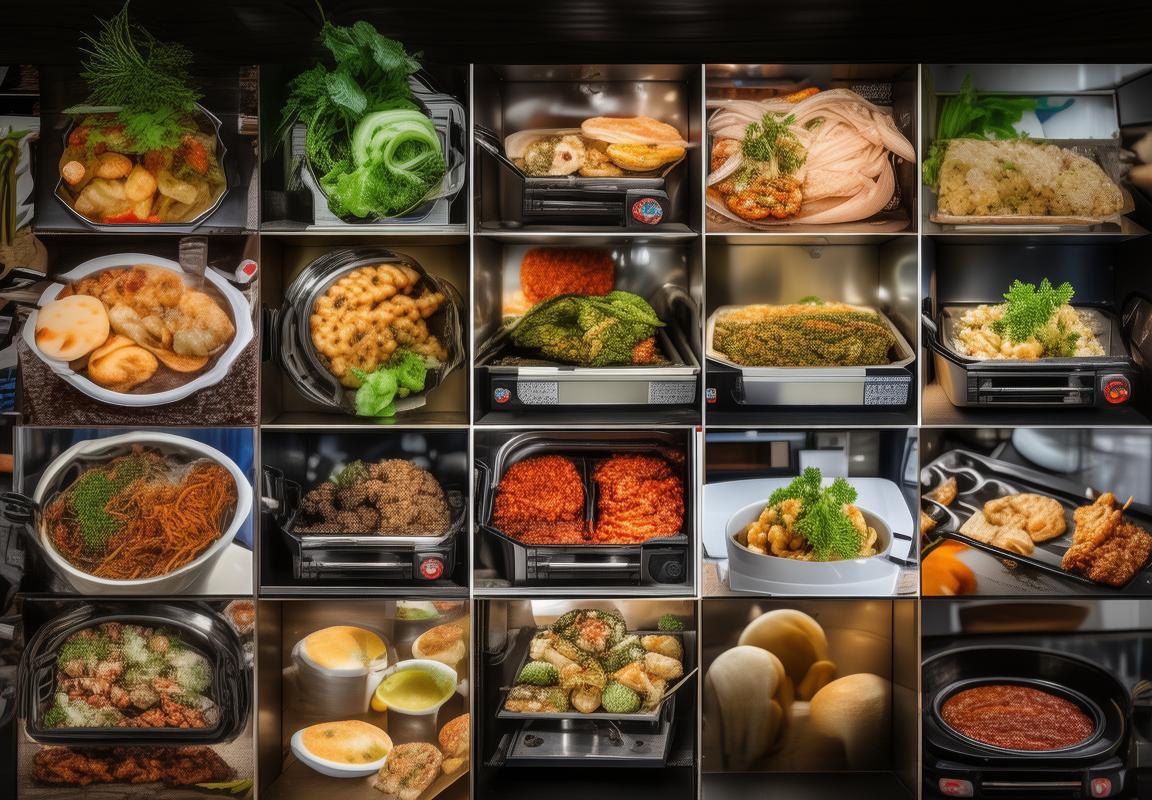
Challenges and Opportunities for Commercial Air Fryer Factories
In the ever-evolving landscape of commercial air fryer factories, several challenges and opportunities coexist, shaping the industry’s future. The competitive market demands not only efficient production but also adaptability and innovation.
The increasing demand for healthier cooking options has pushed commercial air fryer factories to explore new methods that reduce oil content while maintaining flavor. This shift has led to the integration of advanced technology, such as variable temperature control and precise cooking time settings, ensuring consistent results across batches.
Navigating the complexities of international trade and tariffs can be daunting for commercial air fryer factories. With the European Union’s stringent safety standards and the United States’ focus on energy efficiency, factories must balance compliance with cost-effectiveness. This trade-off presents a challenge but also an opportunity to develop niche products that cater to specific regional preferences.
The rise of e-commerce has opened new avenues for commercial air fryer factories to expand their reach. Online sales platforms allow these factories to market their products directly to consumers, bypassing traditional retail channels. This direct-to-consumer approach not only offers a competitive edge but also provides valuable customer feedback that can guide product development.
The sustainability movement has become a significant factor for commercial air fryer factories. As environmental concerns grow, there is a push towards greener production practices. This includes the use of recyclable materials, energy-efficient manufacturing processes, and eco-friendly packaging. While these changes may require initial investments, they also present an opportunity to appeal to environmentally conscious consumers and differentiate products in a crowded market.
The competition within the commercial air fryer sector is fierce, with several key players vying for market share. Factories must continuously innovate their product lines to stay ahead. This could mean introducing new features, improving durability, or even developing entirely new types of air fryers that cater to specific needs, such as countertop models for smaller commercial kitchens or industrial-grade units for large-scale operations.
Regulatory compliance is another challenge that commercial air fryer factories must tackle. Regular updates to safety and health standards mean that factories must stay informed and adapt their production processes accordingly. This can be particularly challenging for smaller factories with limited resources but also presents an opportunity to demonstrate their commitment to quality and safety.
The integration of smart technology into commercial air fryers has become a crucial trend. Smart features, such as remote monitoring and programmable settings, not only enhance the user experience but also allow for better inventory management and operational efficiency. Factories that can invest in and incorporate these technologies will likely find a competitive advantage over those that do not.
Market trends indicate a growing preference for versatility in commercial air fryers. Users are seeking appliances that can handle a variety of cooking tasks, from frying to baking and roasting. Factories that can offer a range of multifunctional models will tap into this trend, attracting a wider customer base.
Consumer preferences are also shifting towards customization. Many businesses are looking for air fryers that can be tailored to their specific needs, whether it’s a different size, a specific color, or additional features. Factories that can provide bespoke solutions will stand out in the market.
The global supply chain disruptions have posed significant challenges for commercial air fryer factories. Finding reliable suppliers for components and materials, as well as managing inventory, has become more complex. However, this situation has also highlighted the importance of building strong relationships with suppliers and exploring alternative sourcing options, which can be an opportunity for long-term resilience.
Lastly, the need for training and development within factories cannot be overstated. As technology advances, the workforce must be equipped with the skills to operate new machinery and understand the latest production techniques. Investing in employee training not only ensures smooth operations but also fosters a culture of continuous improvement within the factory.
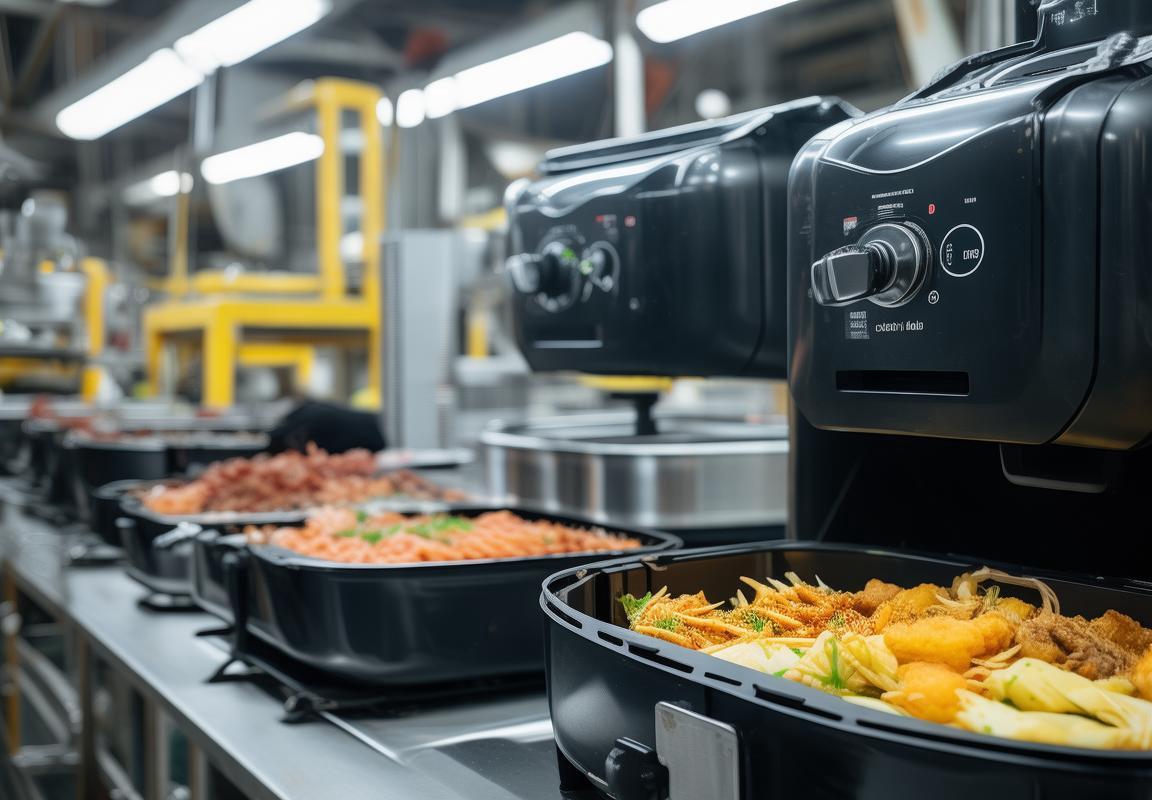
Impact of Sustainability on Commercial Air Fryer Production
The shift towards sustainability has become a pivotal force in the commercial air fryer production landscape. This movement is reshaping the way factories operate, from the materials used to the energy efficiency of the manufacturing process. Here’s a closer look at how sustainability is influencing this sector.
Energy Efficiency and Green ManufacturingManufacturers of commercial air fryers are increasingly focusing on energy efficiency to reduce their carbon footprint. By integrating advanced thermal management systems and optimizing the fryer’s design, these factories are able to minimize energy consumption. This not only slashes operational costs but also aligns with the global push for greener production practices.
Recycling and Reuse of MaterialsThe use of recycled and recyclable materials has gained traction in the production of commercial air fryers. Factories are exploring innovative ways to incorporate post-consumer plastics, metals, and other materials into their products. This not only helps in reducing waste but also addresses the demand for more eco-friendly products from consumers and businesses alike.
Water Conservation TechniquesWater usage is another critical aspect of sustainability that commercial air fryer factories are addressing. Implementing advanced water recycling systems and reducing water waste during the manufacturing process is becoming standard practice. These measures not only conserve a precious resource but also contribute to the overall sustainability of the factory’s operations.
Energy-Saving ComponentsThe components within commercial air fryers are also being designed with sustainability in mind. Energy-saving features like LED lighting, smart temperature controls, and efficient heating elements are becoming more prevalent. These innovations not only enhance the performance of the fryers but also contribute to their overall sustainability.
Carbon Footprint ReductionFactories are actively working to reduce their carbon footprint by adopting cleaner energy sources. Solar panels, wind turbines, and other renewable energy solutions are being integrated into the production facilities. By reducing reliance on fossil fuels, these factories are not only cutting costs but also contributing to a cleaner environment.
Certifications and StandardsSustainability is not just a buzzword; it’s a driving force behind certifications and standards in the commercial air fryer industry. Factories are striving to meet or exceed environmental regulations and certifications such as Energy Star, ECO-label, and the EU’s Eco-design Directive. These certifications not only assure consumers of a product’s environmental credentials but also help factories differentiate their products in a competitive market.
Waste Reduction in ProductionThe reduction of waste during the production process is a significant aspect of sustainability. Commercial air fryer factories are implementing lean manufacturing principles to minimize waste. This includes optimizing supply chains, reducing overproduction, and finding new uses for manufacturing by-products.
Consumer Expectations and Market DemandConsumer awareness of environmental issues has led to a growing demand for sustainable products. As a result, commercial air fryer factories are under pressure to produce more sustainable fryers. This demand is driving innovation and encouraging factories to invest in sustainable practices.
Investment in Research and DevelopmentInvesting in research and development is crucial for commercial air fryer factories looking to enhance sustainability. By funding studies into new materials, manufacturing processes, and energy-saving technologies, these factories are paving the way for a more eco-friendly future.
Sustainability Reporting and TransparencyTransparency is key in the sustainability movement. Commercial air fryer factories are increasingly providing detailed sustainability reports to stakeholders, including investors, customers, and regulatory bodies. This transparency builds trust and demonstrates a commitment to sustainable practices.
In conclusion, the impact of sustainability on commercial air fryer production is profound. From the materials used to the energy efficiency of the manufacturing process, every aspect of production is being scrutinized and improved. As the market continues to evolve, factories that embrace sustainability are not only contributing to a healthier planet but are also positioning themselves for long-term success.
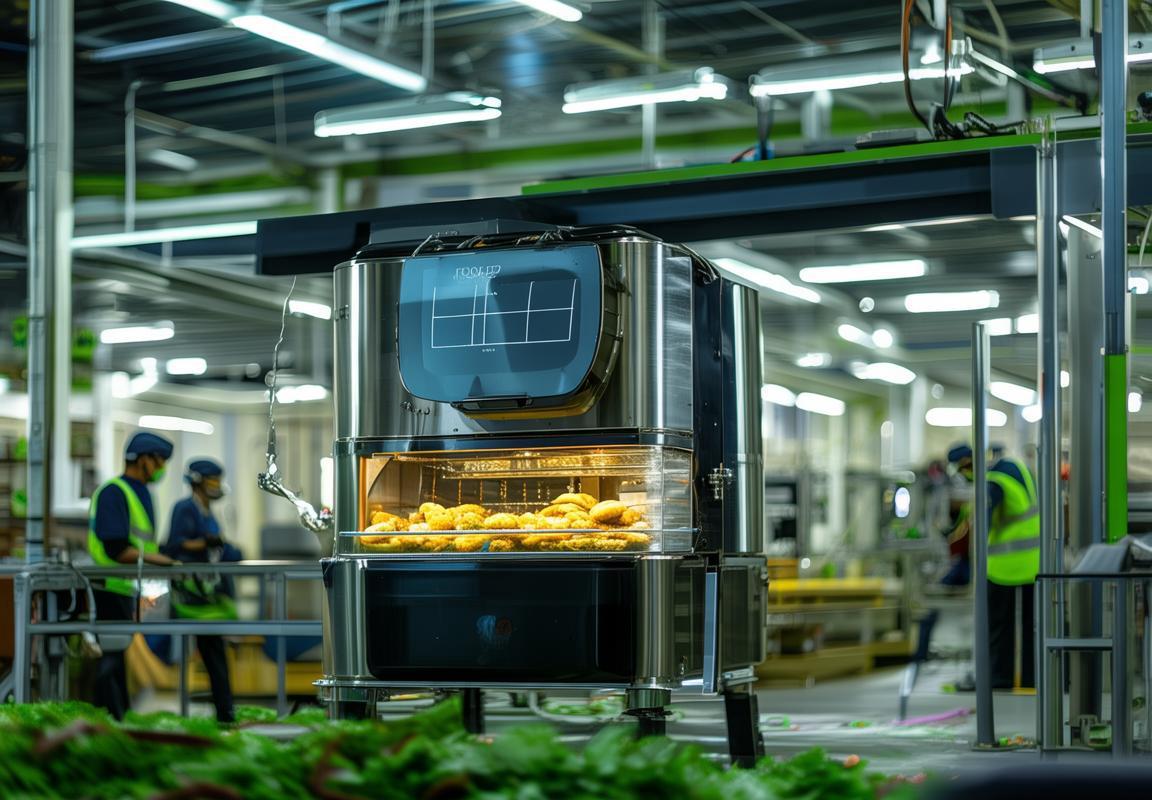
Consumer Health Trends and Their Influence on Air Fryer Demand
In recent years, consumer health trends have been a driving force behind the increasing demand for air fryers. These appliances have become a staple in kitchens worldwide, not just due to their convenience but also because they cater to the growing desire for healthier cooking methods. Let’s delve into how these trends are shaping the market for air fryers.
Health-conscious consumers are increasingly seeking cooking methods that reduce the amount of oil used, which is a common concern with traditional frying. Air fryers, which use hot air to circulate around food, require less oil than traditional deep-frying, making them a more health-friendly option. This shift towards healthier cooking has been particularly influential in the European and American markets, where dietary concerns are at the forefront of consumer decisions.
The popularity of low-carb diets has also played a significant role in the rise of air fryers. Foods that are fried or cooked in oil are often associated with high-carb content, and as consumers turn to alternatives like cauliflower rice or zucchini noodles, air fryers provide a means to prepare these dishes with minimal oil. This trend has led to a surge in demand for air fryers, as they offer a way to enjoy fried foods without the guilt.
Moreover, the health benefits of air-fried foods are not just limited to reduced oil content. Studies have shown that air frying can help retain more of the nutrients found in the food compared to other cooking methods, such as boiling or steaming. This nutritional advantage is particularly appealing to consumers who are looking to maintain a balanced diet while still indulging in their favorite meals.
The influence of social media and influencers cannot be overlooked in the context of consumer health trends. With the rise of platforms like Instagram and TikTok, where health and fitness are prominent topics, air fryers have been featured in numerous cooking challenges and healthy eating routines. These online communities have helped to normalize air frying as a healthy cooking method, further boosting demand.
In terms of air fryer demand, the preference for convenience and time-saving features is also a key factor. Busy lifestyles have led to a growing market for quick and easy meals, and air fryers offer a solution that allows consumers to prepare a variety of dishes in a short amount of time. This convenience factor is particularly attractive to young professionals and families, who are always on the lookout for ways to simplify their cooking routines.
Another trend that has influenced air fryer demand is the rise of clean eating. Consumers are increasingly interested in whole foods and natural ingredients, and air fryers provide a means to cook these foods with minimal additives or preservatives. The ability to prepare homemade snacks and meals that are free from artificial flavors and colors is a significant draw for many health-conscious consumers.
The influence of celebrity chefs and chefs on television cooking shows has also had a substantial impact on air fryer demand. As these chefs promote the use of air fryers on their shows, they inspire viewers to try new recipes and cooking techniques at home. This celebrity endorsement has helped to elevate the air fryer’s status from a niche kitchen gadget to a must-have appliance for anyone interested in healthy cooking.
Lastly, the global pandemic has accelerated the shift towards home cooking and meal prepping. With more people spending more time at home, the demand for appliances that can help streamline the cooking process has surged. Air fryers have become a go-to choice for those looking to prepare healthy, delicious meals without the need for complex cooking equipment.
In conclusion, consumer health trends have had a profound influence on the demand for air fryers. The focus on health, nutrition, convenience, and the influence of social media and celebrity chefs have all contributed to the air fryer’s popularity. As these trends continue to evolve, it’s likely that the air fryer will remain a staple in the kitchen for years to come.
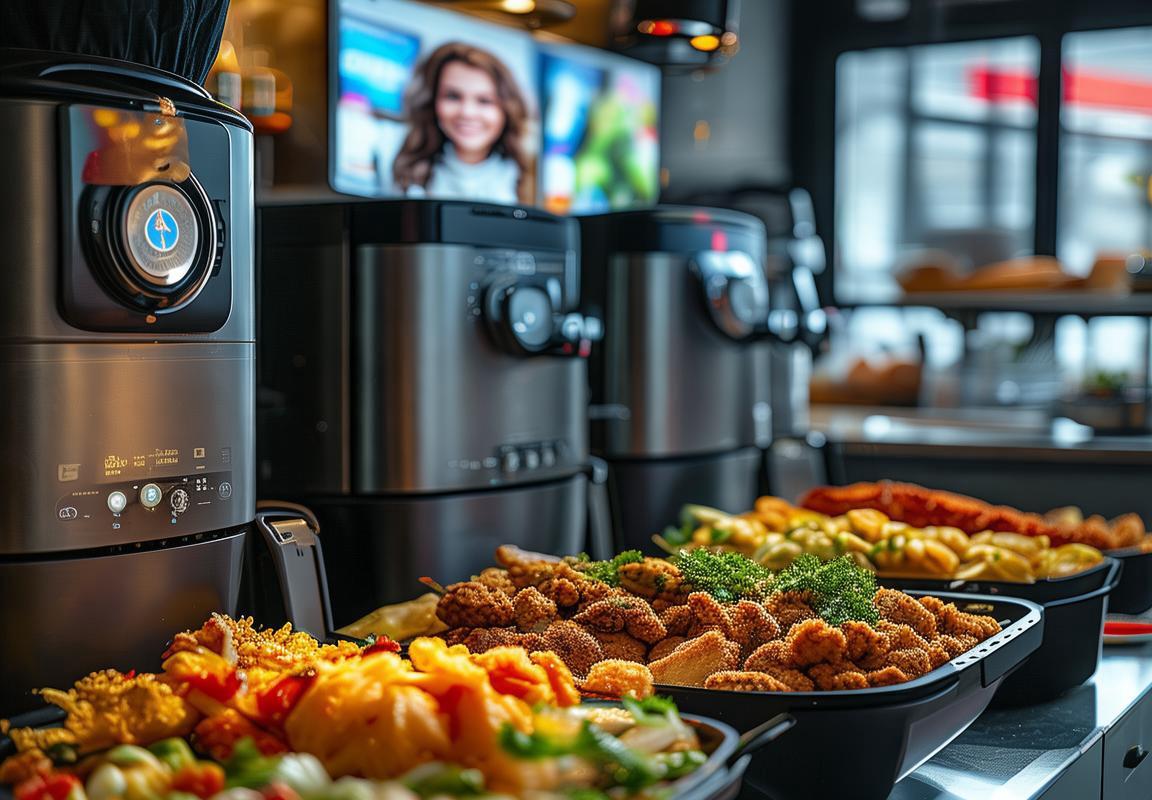
Forecast and Future Outlook for the Commercial Air Fryer Industry
The commercial air fryer industry has witnessed a surge in demand, largely driven by consumer health trends and technological advancements. As we delve into the forecast and future outlook for this sector, it’s clear that several key factors will shape its trajectory.
Consumer preference for healthier cooking methods has been on the rise, with air fryers offering a viable alternative to traditional frying techniques. The convenience and perceived health benefits of air frying have made them a staple in modern kitchens, both in homes and commercial settings.
Air fryers are designed to mimic the taste and texture of fried foods with a fraction of the oil content. This has resonated with health-conscious consumers who are looking to reduce their intake of saturated fats and calories while still enjoying their favorite meals. The trend towards low-carb and gluten-free diets has also contributed to the popularity of air fryers, as they can be used to prepare a wide range of dishes that cater to these dietary needs.
The integration of smart technology in air fryers has further expanded their appeal. Features like programmable timers, temperature controls, and WiFi connectivity allow users to remotely monitor and adjust cooking settings. These innovations not only enhance the user experience but also open up new opportunities for commercial air fryer manufacturers to offer premium products.
In the commercial sector, the demand for air fryers has been driven by the need for healthier menu options. Fast-food chains, restaurants, and catering services are increasingly adopting air fryers to offer customers healthier alternatives to fried foods. This shift is not only beneficial for public health but also for businesses looking to differentiate themselves in a competitive market.
The sustainability movement has also played a role in the growth of the commercial air fryer industry. As awareness of environmental issues grows, businesses are under pressure to adopt greener practices. Air fryers consume less energy and produce less waste compared to traditional fryers, making them an environmentally friendly choice.
Looking ahead, several trends are poised to influence the future of the commercial air fryer industry. One significant trend is the continued emphasis on health and wellness. With an aging population and rising health concerns, there is a growing demand for healthier cooking solutions. This trend is likely to drive the development of air fryers with even more advanced health features, such as integrated nutritional tracking and personalized cooking programs.
Another trend is the customization of air fryers to cater to specific market segments. For instance, the demand for commercial air fryers that can handle larger volumes or are designed for specific types of food preparation is expected to grow. This could lead to the creation of specialized air fryer models for bakeries, pizzerias, and snack bars.
The rise of the sharing economy and food delivery services is also expected to impact the commercial air fryer industry. With more people opting for delivery over dining out, there is a need for portable and efficient air fryers that can be used by food delivery services to prepare and deliver meals quickly and healthily.
Technology will continue to play a pivotal role in shaping the future of the commercial air fryer industry. Advancements such as AI-driven cooking algorithms, which can optimize cooking times and temperatures for different types of food, are likely to become more prevalent. Additionally, the integration of IoT (Internet of Things) could lead to a new era of connected kitchen appliances, allowing for real-time monitoring and maintenance of air fryers.
The regulatory landscape is another factor that could influence the future of the commercial air fryer industry. Health and safety standards, as well as environmental regulations, will continue to evolve, prompting manufacturers to adapt their products accordingly. Compliance with these standards will be crucial for businesses looking to enter or remain competitive in the market.
In conclusion, the commercial air fryer industry is poised for continued growth, driven by health and sustainability trends, technological advancements, and evolving consumer preferences. As the industry adapts to these changing dynamics, it will likely see new opportunities emerge, leading to a dynamic and innovative future.